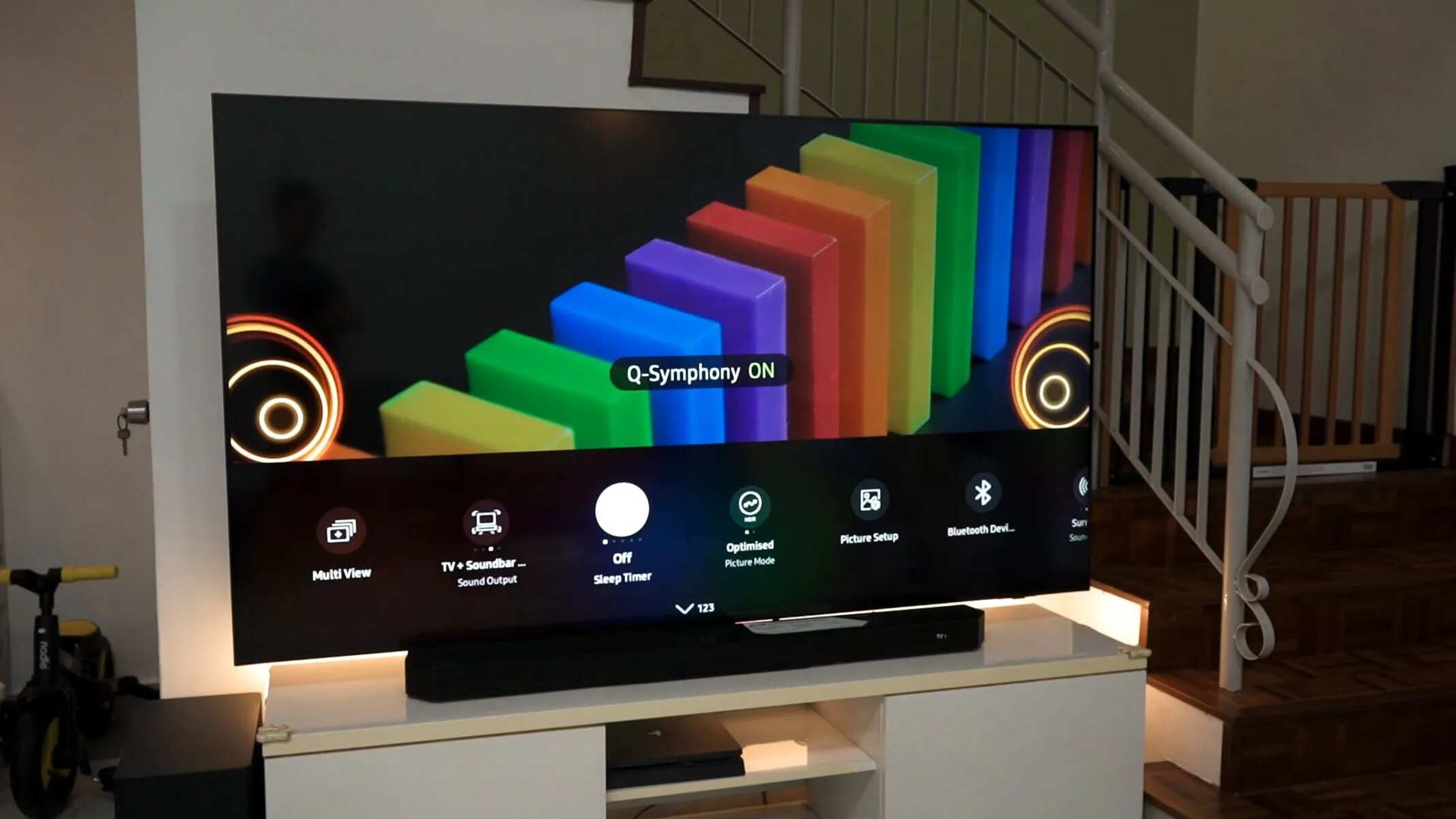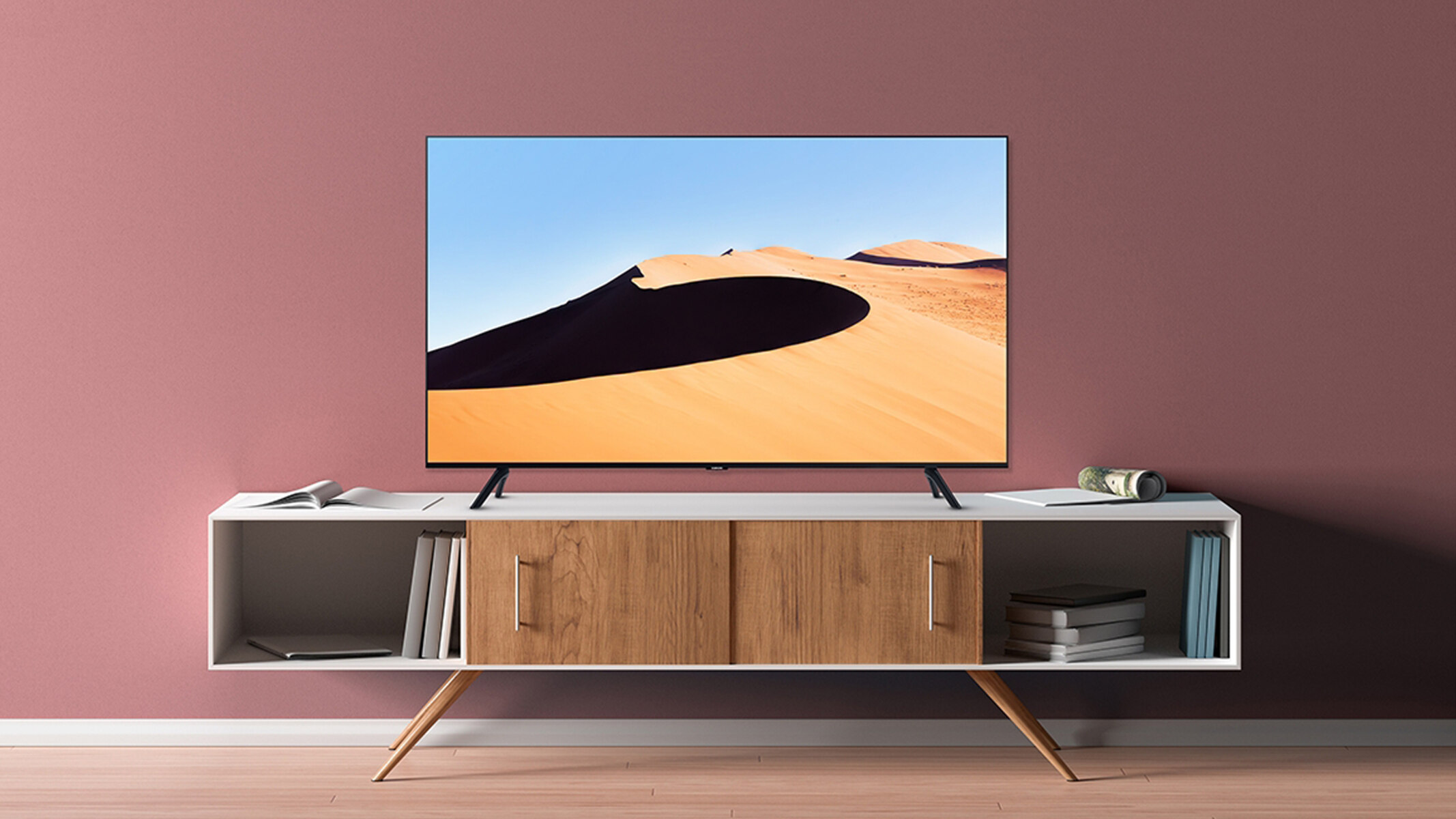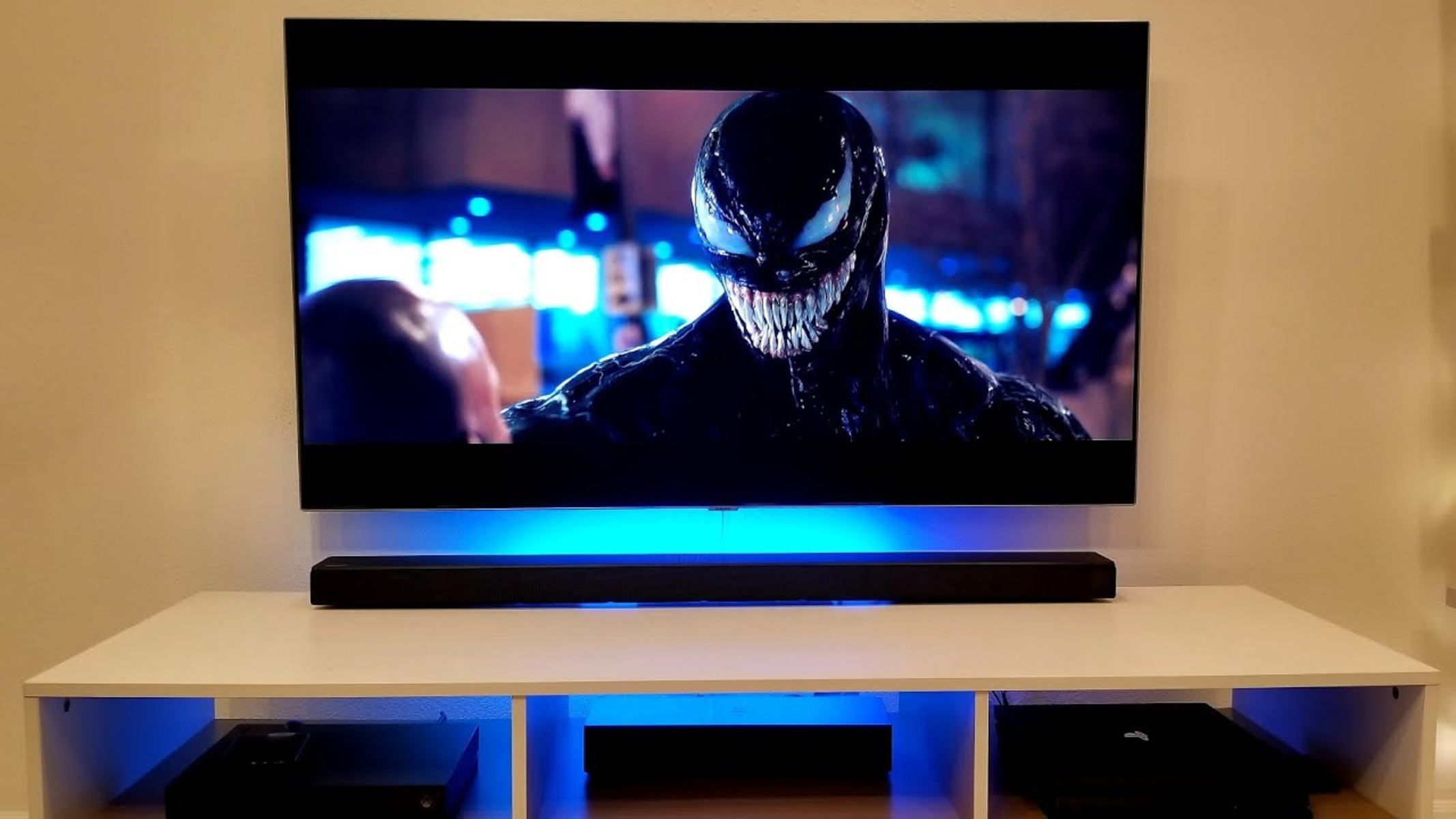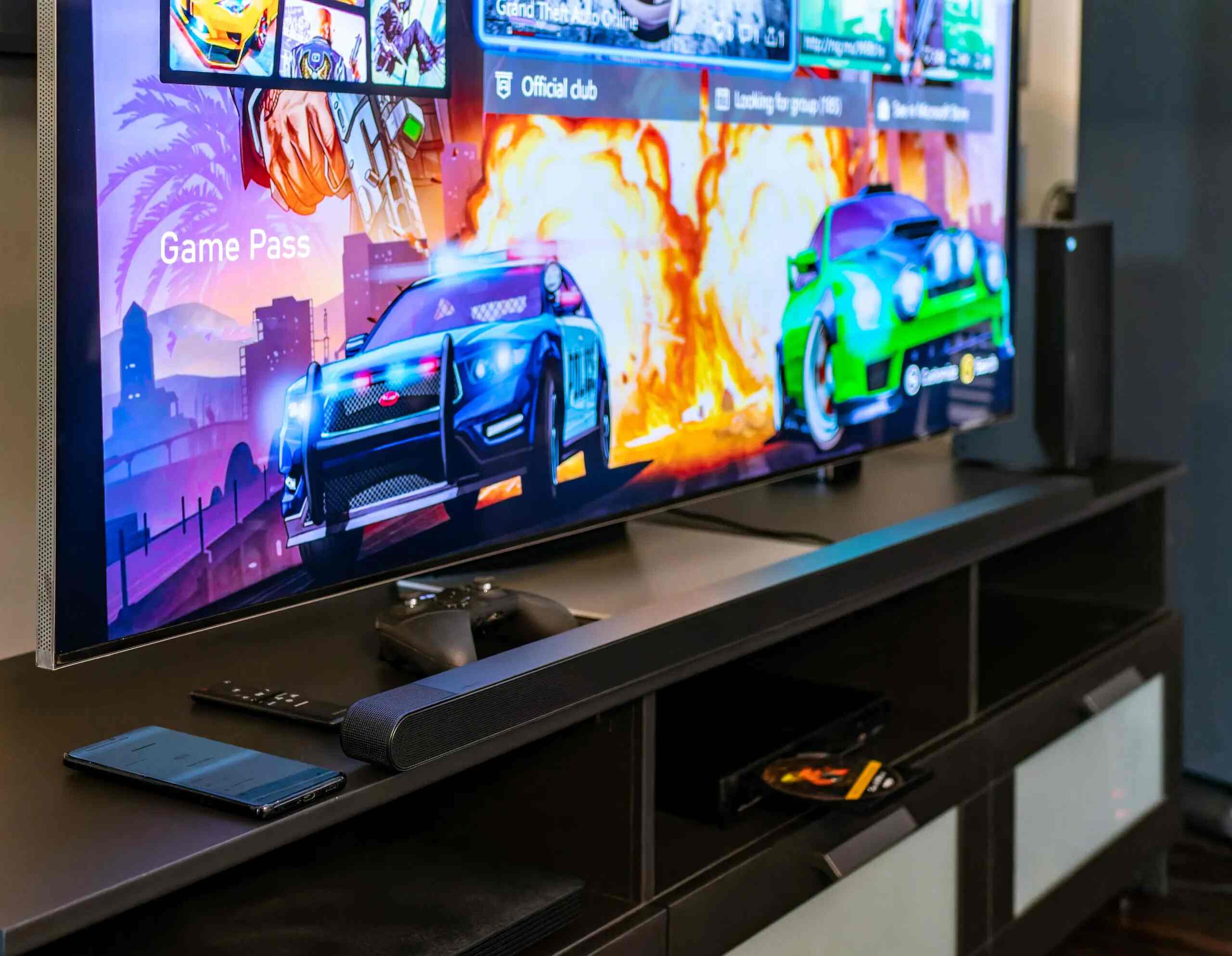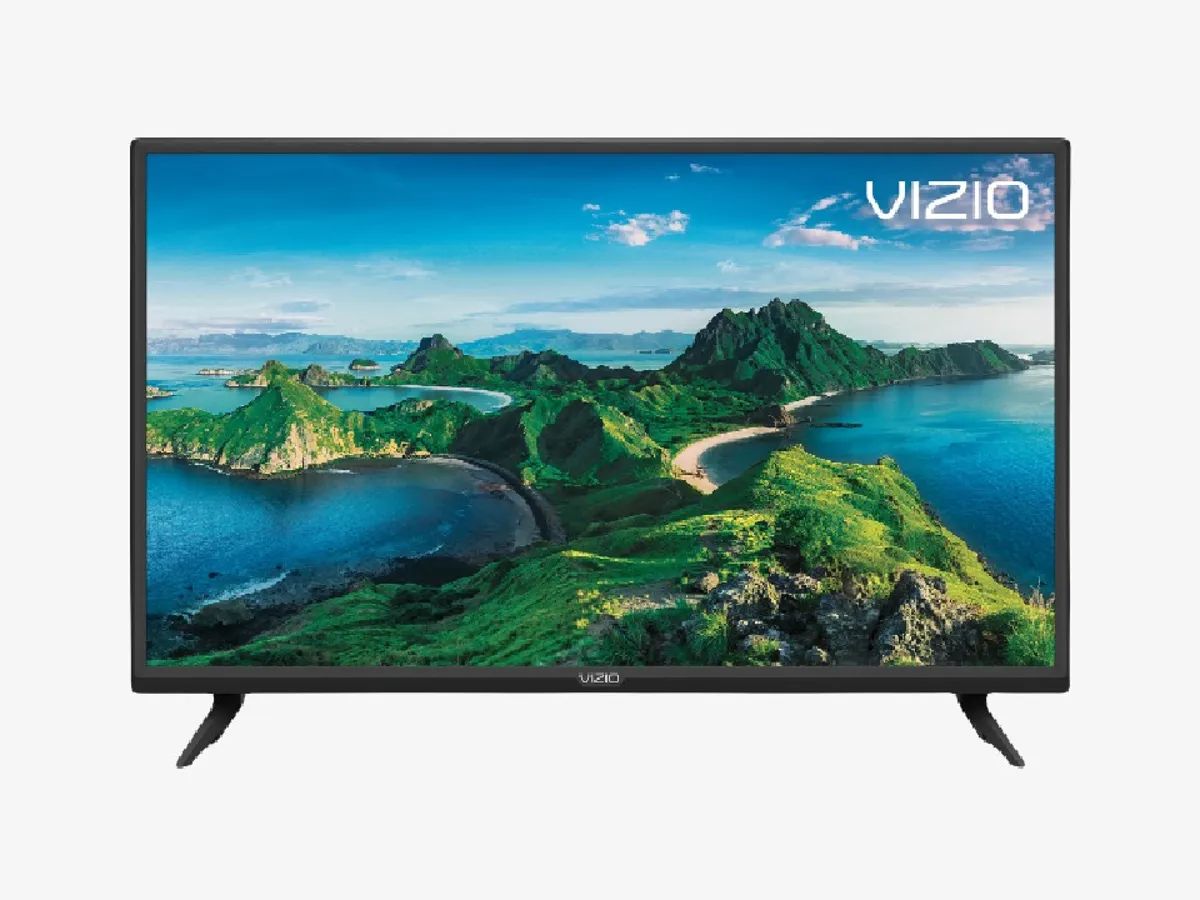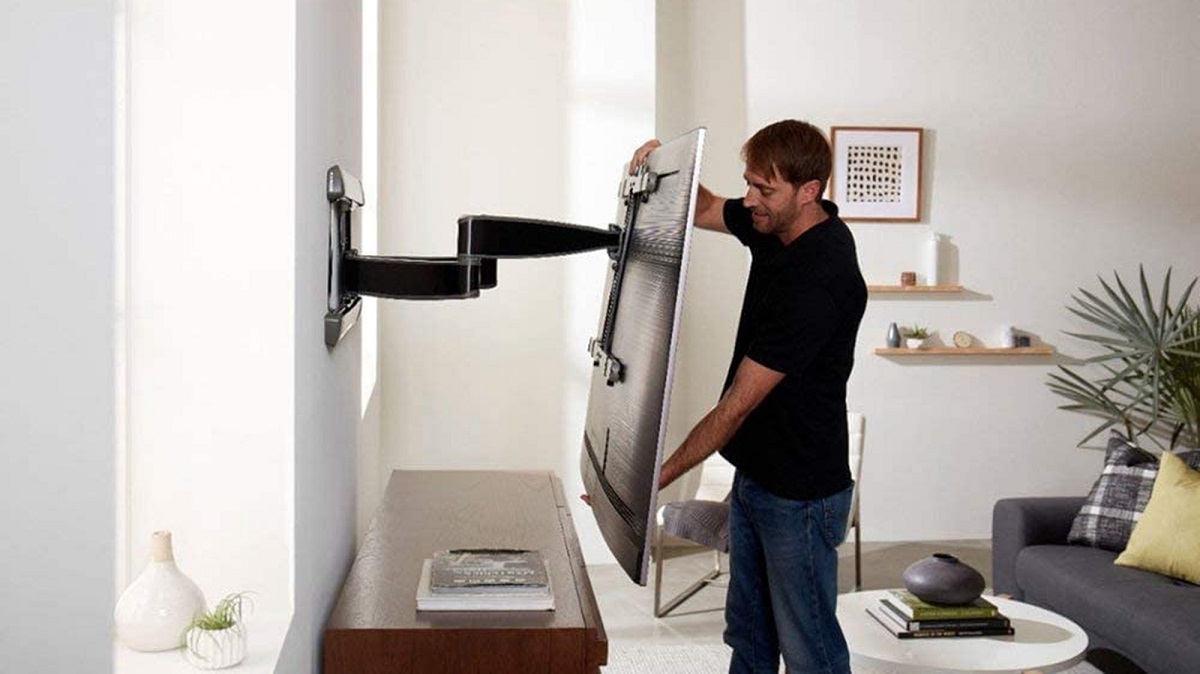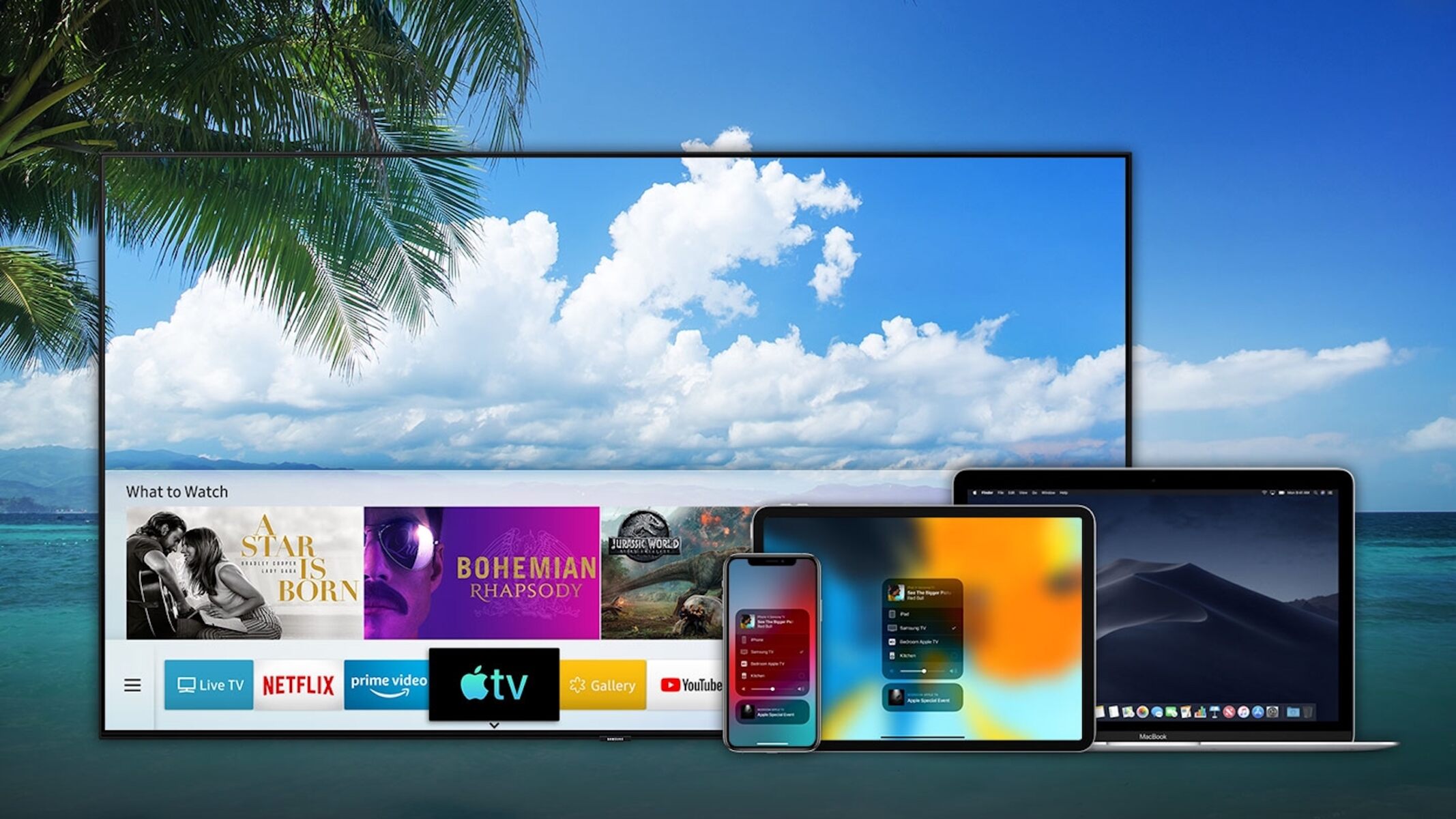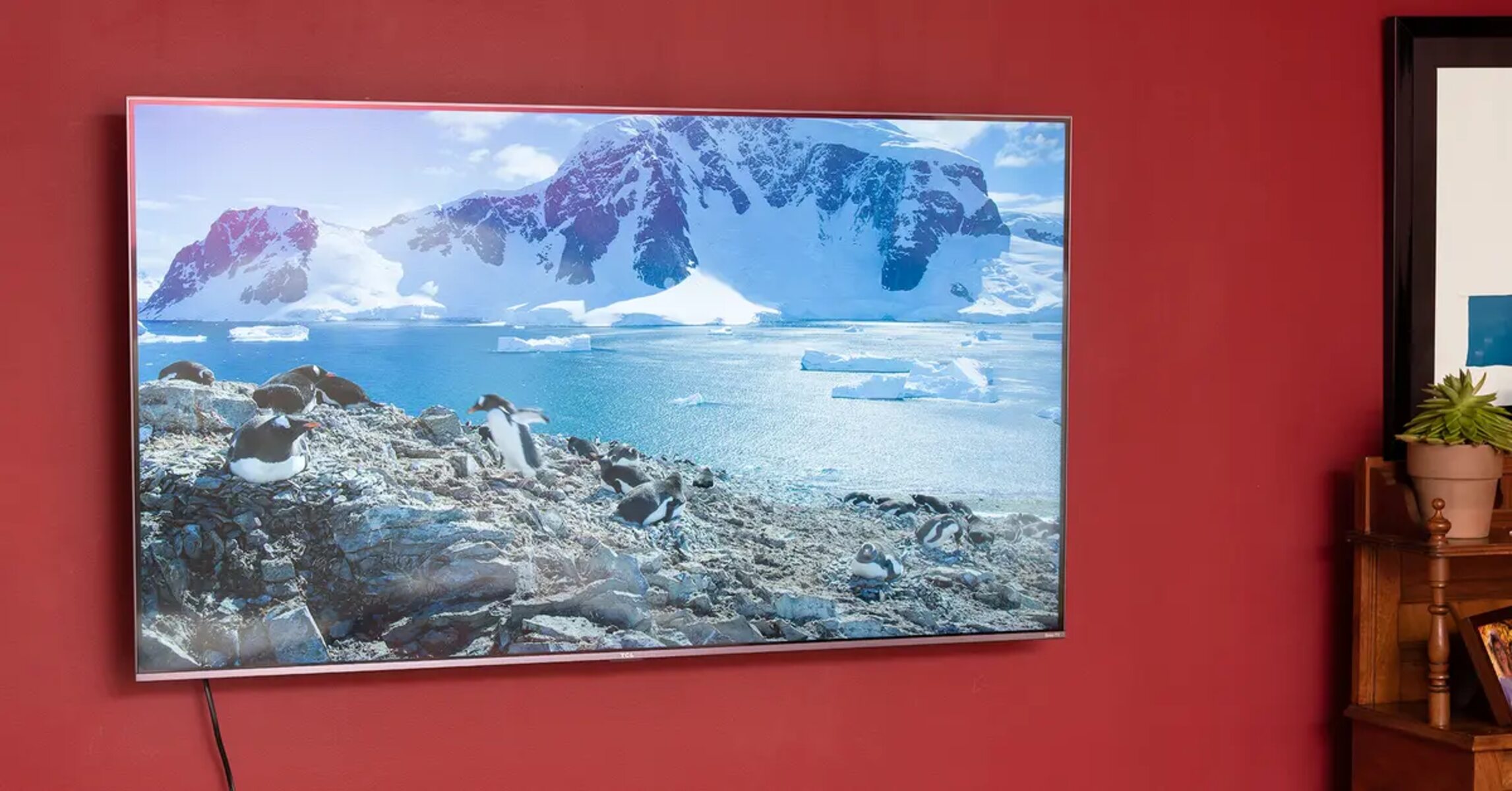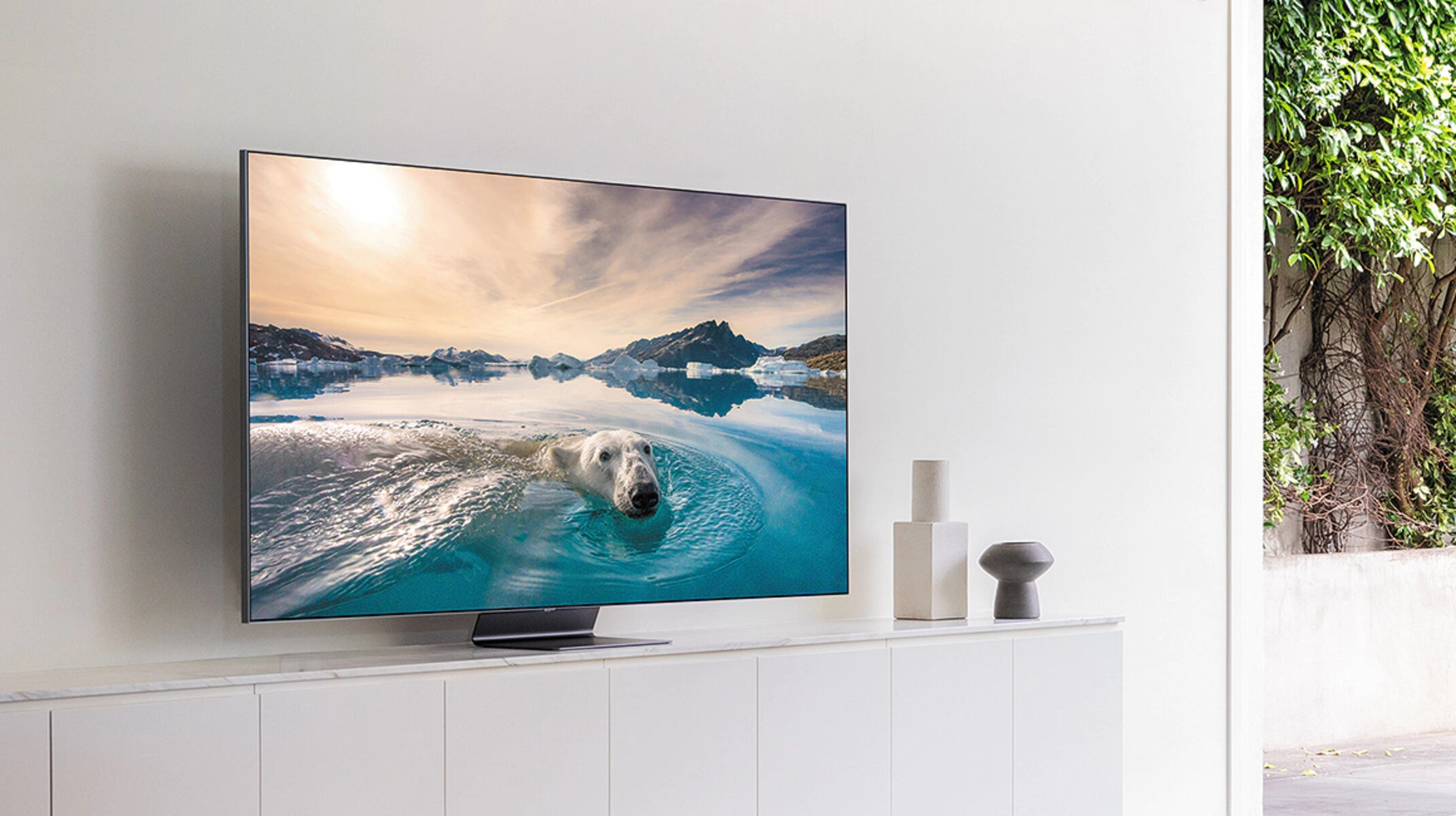Introduction
Welcome to the world of Samsung QLED TVs! With their stunning picture quality and cutting-edge features, these televisions are a popular choice for home entertainment. Whether you’re a movie enthusiast, a sports fan, or a gaming aficionado, the Samsung QLED TV offers a captivating viewing experience. However, before you can immerse yourself in your favorite content, you need to know how to properly connect and set up your Samsung QLED TV.
In this article, we will guide you through the process of hooking up your Samsung QLED TV to various devices and walk you through the necessary steps to optimize the display settings. So, let’s get started and ensure that you can maximize your viewing pleasure.
Note that the specific steps outlined in this guide may vary depending on the model of your Samsung QLED TV. However, the general principles and concepts are applicable across most QLED TV models.
Please remember that while we will do our best to provide accurate and comprehensive instructions, it’s always a good idea to consult the user manual that came with your Samsung QLED TV for detailed information tailored to your specific model.
Now, let’s dive into the different connection options and explore how to make the most of your Samsung QLED TV!
Choosing the Right Connection
When it comes to connecting your Samsung QLED TV to external devices, you have several options to choose from. The choice of connection will depend on the type of device you want to connect and the available ports on your TV. Here are some of the most common connection options:
- HDMI: HDMI (High-Definition Multimedia Interface) is the most common and recommended connection method for high-definition devices such as Blu-ray players, gaming consoles, and cable/satellite boxes. HDMI cables provide both high-quality audio and video signals, ensuring a crisp and immersive viewing experience. Most Samsung QLED TVs come equipped with multiple HDMI ports, so you can connect several devices simultaneously.
- HDMI ARC: HDMI ARC (Audio Return Channel) is a special HDMI port on your TV that simplifies the connection between your TV and an audio device, such as a soundbar or AV receiver. With HDMI ARC, you can send audio from your TV to the external audio device through the same HDMI cable, eliminating the need for additional audio cables.
- Component Cables: Component cables, also known as YPbPr cables, are another option for connecting devices to your Samsung QLED TV. These cables are capable of transmitting high-definition video signals, but they require separate audio cables for audio transmission. Component cables are commonly used for connecting older devices that do not have HDMI ports.
- Composite Cables: Composite cables, also known as RCA cables, are the red, white, and yellow cables commonly found on older devices. While composite cables are capable of transmitting video and audio signals, they are limited to standard-definition quality. It’s recommended to use composite cables only when connecting devices that do not have other connection options.
- Optical Cable: An optical cable, also known as a Toslink cable, is used to transmit digital audio signals between your Samsung QLED TV and an audio device. Optical cables provide high-quality audio and are commonly used for connecting soundbars, home theater systems, and other audio devices that support optical connections.
When selecting the right connection method, consider the capabilities of your devices and choose the option that provides the highest quality audio and video transmission. Take note of the available ports on your TV and the required cables for each connection option. Now that you have an understanding of the different connection methods, let’s proceed to the next section to learn how to connect your Samsung QLED TV via HDMI.
Connecting via HDMI
HDMI (High-Definition Multimedia Interface) is the preferred method for connecting high-definition devices to your Samsung QLED TV. To connect your device via HDMI, follow these steps:
- Locate the HDMI ports on your Samsung QLED TV. These ports are typically labeled and can be found on the back or side of the TV.
- Take note of the HDMI port number where you will be connecting your device. This will help you select the correct input source on your TV later.
- Connect one end of the HDMI cable to the HDMI output port of your device.
- Connect the other end of the HDMI cable to the HDMI input port on your Samsung QLED TV.
- Once the HDMI cable is securely connected, turn on both your Samsung QLED TV and the device you want to connect.
- Using the Samsung QLED TV remote, press the “Home” button, navigate to the “Settings” menu, and select “Source”.
- Select the HDMI input source corresponding to the HDMI port that you used to connect your device.
- The video and audio from your device will now be displayed on your Samsung QLED TV. If the display doesn’t appear, double-check the HDMI connections and ensure that your device is set to output audio and video via HDMI.
It’s important to note that some devices may have additional settings that need to be configured for optimal performance. Consult the user manual or the manufacturer’s website of your device for specific instructions on adjusting HDMI settings. Additionally, be sure to use high-quality HDMI cables that support the necessary resolutions and features of your devices to ensure the best possible picture and sound quality.
Now that you’ve successfully connected your device to your Samsung QLED TV via HDMI, you can enjoy immersive and high-quality audiovisual experiences. In the next section, we will explore how to connect devices using HDMI ARC.
Connecting via HDMI ARC
HDMI ARC (Audio Return Channel) simplifies the audio connection between your Samsung QLED TV and external audio devices such as soundbars or AV receivers. Follow these steps to connect your audio device using HDMI ARC:
- Identify the HDMI ARC port on your Samsung QLED TV. It is usually labeled as “HDMI ARC” or “ARC”.
- Locate the HDMI ARC port on your audio device. It is also typically labeled as “HDMI ARC” or “ARC”.
- Using an HDMI cable, connect one end to the HDMI ARC port on your audio device.
- Connect the other end of the HDMI cable to the HDMI ARC port on your Samsung QLED TV.
- Turn on both your Samsung QLED TV and the audio device.
- Using the Samsung QLED TV remote, press the “Home” button, navigate to the “Settings” menu, and select “Sound”.
- Select “Speaker Settings” and choose “Audio Out/Optical” or “HDMI ARC”.
- Ensure that the audio output is set to “HDMI ARC” on your audio device.
- Your Samsung QLED TV and audio device should now be connected via HDMI ARC. Adjust the volume on your audio device to enjoy enhanced audio output from your TV.
It’s important to note that not all HDMI ports on your Samsung QLED TV support HDMI ARC. Refer to your TV’s user manual or specifications to identify the specific ports that are HDMI ARC-enabled.
Additionally, some audio devices require software updates or specific settings to enable HDMI ARC functionality. Check the user manual or the manufacturer’s website of your audio device for any necessary instructions.
By connecting your audio device via HDMI ARC, you can enjoy high-quality audio without the need for extra cables. In the next section, we will explore another connection option – connecting via component cables.
Connecting via Component Cables
If you have older devices that do not have HDMI ports, you can still connect them to your Samsung QLED TV using component cables. Follow these steps to connect your devices using component cables:
- Identify the component video input ports on your Samsung QLED TV. These ports are usually color-coded, with red, blue, and green RCA jacks.
- Locate the component video output ports on your device. These ports are also color-coded and correspond to the colors of the component video input ports on your TV.
- Connect one end of the component video cable to the component video output ports on your device.
- Connect the other end of the component video cable to the component video input ports on your Samsung QLED TV, matching the colors of the RCA jacks.
- Next, locate the audio input ports on your Samsung QLED TV. These ports are typically labeled as “L,” “R,” and “Audio.”
- Take note of the corresponding audio output ports on your device. These are usually located near the component video output ports.
- Connect the audio cable to the audio output ports on your device.
- Connect the other end of the audio cable to the corresponding audio input ports on your Samsung QLED TV, matching the colors of the RCA jacks.
- After connecting all the cables, power on your Samsung QLED TV and the connected device.
- Using the Samsung QLED TV remote, press the “Home” button, navigate to the “Settings” menu, and select “Source”.
- Select the component input source corresponding to the connected device.
- Now, you can enjoy the content from your device on your Samsung QLED TV. Adjust the volume on the TV or the connected device as needed for optimal audio output.
It’s worth noting that component cables can only support video up to 1080p resolution. If you have devices capable of higher resolutions, it is recommended to use HDMI cables for better image quality.
By following these steps, you can connect your older devices to your Samsung QLED TV using component cables. However, keep in mind that the audio and video quality may not match that of HDMI connections. In the next section, we will discuss another connection option – connecting via composite cables.
Connecting via Composite Cables
If you have older devices that lack HDMI or component video outputs, you can still connect them to your Samsung QLED TV using composite cables. Follow these steps to connect your devices using composite cables:
- Locate the composite video input port on your Samsung QLED TV. It is usually labeled as “Video” or “Composite”.
- Identify the composite video output port on your device. It is typically labeled as “Video Out” or “Composite Out”.
- Connect the yellow end of the composite video cable to the composite video output port on your device.
- Connect the other end of the composite video cable to the composite video input port on your Samsung QLED TV.
- Next, locate the audio input ports on your Samsung QLED TV. These ports are usually color-coded, with red and white RCA jacks.
- Take note of the corresponding audio output ports on your device. They are also usually color-coded, matching the colors of the RCA jacks.
- Connect the red and white ends of the composite audio cables to the corresponding audio output ports on your device.
- Connect the other ends of the composite audio cables to the red and white audio input ports on your Samsung QLED TV.
- After connecting all the cables, power on your Samsung QLED TV and the connected device.
- Using the Samsung QLED TV remote, press the “Home” button, navigate to the “Settings” menu, and select “Source”.
- Select the composite input source corresponding to the connected device.
- Now, you’re ready to enjoy the content from your device on your Samsung QLED TV. Adjust the volume on the TV or the connected device as needed for optimal audio output.
It’s important to note that composite cables are limited to standard-definition video and stereo audio. For better video and audio quality, consider upgrading to HDMI or component cable connections if your devices support them.
By following these steps, you can connect your older devices to your Samsung QLED TV using composite cables. Remember that the picture and sound quality may not be as good as with other connection methods. In the next section, we will explore another option – connecting via an optical cable.
Connecting via Optical Cable
If you want to enhance your audio experience by connecting your Samsung QLED TV to an external audio device such as a soundbar or home theater system, you can use an optical cable. Follow these steps to connect your devices using an optical cable:
- Locate the optical audio output port on your Samsung QLED TV. It is usually labeled as “Optical Out” or “Digital Audio Out”.
- Identify the optical audio input port on your audio device. It is typically labeled as “Optical In” or “Digital Audio In”.
- Using an optical cable, connect one end to the optical audio output port on your Samsung QLED TV.
- Connect the other end of the optical cable to the optical audio input port on your audio device.
- Ensure that the optical cable is securely connected to both devices.
- Power on your Samsung QLED TV and the connected audio device.
- Using the Samsung QLED TV remote, press the “Home” button, navigate to the “Settings” menu, and select “Sound”.
- Select “Speaker Settings” and choose “Audio Out/Optical”.
- Adjust the volume on your audio device as needed for optimal audio output.
- Your Samsung QLED TV and audio device are now connected via the optical cable. Enjoy enhanced audio quality while watching your favorite movies, shows, or playing games.
Optical cables are capable of transmitting high-quality digital audio signals, providing superior sound performance. However, please note that optical connections only transmit audio signals and do not carry video signals. Therefore, you will still need to connect your video source directly to your TV using HDMI or other appropriate cables.
By following these steps, you can connect your Samsung QLED TV to an external audio device using an optical cable. Enjoy immersive and high-fidelity audio to complement your viewing experience. In the next section, we will discuss how to set up external devices connected to your TV.
Setting up External Devices
Once you have successfully connected your external devices to your Samsung QLED TV, it is essential to properly set them up for optimal performance. Here are some key steps to follow when setting up external devices:
- Power On and Initialization: Ensure that all connected devices are powered on and properly initialized. This includes devices such as gaming consoles, Blu-ray players, cable/satellite boxes, and streaming devices. Follow the manufacturer’s instructions for proper setup and initialization process.
- Input Selection: Using your Samsung QLED TV remote, press the “Source” or “Input” button to access the input selection menu. Select the corresponding input source for the connected device. This step is crucial to ensure that the video and audio signals from the external device are properly routed to your TV.
- Device Configuration: Many external devices have specific settings that can be adjusted to enhance the viewing or gaming experience. For example, gaming consoles may offer options for screen resolution, color depth, and display mode. Consult the user manual or online resources provided by the device manufacturer for guidance on configuring these settings.
- Remote Syncing: If you have a universal remote control, you may need to sync it with your Samsung QLED TV and the connected devices. Refer to the instructions provided with the universal remote for the proper programming steps. This will allow you to control multiple devices using a single remote.
- Audio Device Setup: If you have connected an audio device such as a soundbar or home theater system, follow the manufacturer’s instructions for proper setup and calibration. This may involve adjusting speaker placement, audio modes, equalization settings, and volume levels to achieve the desired audio performance.
- Internet Connectivity: If any of your connected devices require an internet connection, make sure they are properly connected to your home network. This is particularly important for streaming devices that rely on internet access to deliver online content. Follow the device-specific instructions to connect to your Wi-Fi network or use an Ethernet cable if available.
Properly setting up your external devices will ensure that you can fully enjoy their features and capabilities. Take the time to familiarize yourself with the user manuals and online resources provided by the device manufacturers for detailed setup instructions and tips.
Next, we will explore how to adjust the display settings on your Samsung QLED TV to further enhance your viewing experience.
Adjusting Display Settings
To maximize your viewing experience on your Samsung QLED TV, it’s essential to adjust the display settings according to your preferences and the viewing environment. Here are some key display settings to consider:
- Picture Mode: Your Samsung QLED TV offers several preset picture modes, such as Standard, Movie, Sports, and Game. Experiment with these modes to find the one that suits your viewing preferences. You can access the Picture Mode settings through the TV’s menu or settings options.
- Brightness and Contrast: Adjusting the brightness and contrast levels can significantly impact the overall picture quality. Too high or too low settings can result in an uncomfortable viewing experience. Find a balance that provides a clear and vibrant image without losing detail in darker or brighter areas of the screen.
- Color and Sharpness: Fine-tune the color and sharpness settings to enhance the clarity and depth of the visuals. Avoid overly saturated colors or excessive sharpness, as they may lead to unnatural-looking images. Adjust these settings to achieve a balanced and realistic picture quality.
- Backlight: The backlight setting determines the brightness of the TV’s screen. Higher settings can make the picture appear more vibrant, but it may also result in increased power consumption. Consider the lighting conditions in your viewing environment when adjusting the backlight setting.
- Aspect Ratio: Choose the appropriate aspect ratio for your content. Most modern TVs have an automatic aspect ratio detection, but you can also manually select the aspect ratio that best matches the content you’re watching. Common aspect ratios include 16:9 (widescreen), 4:3 (standard), and cinematic ratios.
- Motion Enhancement: Samsung QLED TVs often offer motion enhancement features that aim to reduce motion blur and improve motion smoothness. These features include technologies like Auto Motion Plus or Motion Interpolation. Experiment with these settings to find the level that suits your preferences, as some people may find excessive motion smoothing distracting.
While adjusting the display settings, it’s helpful to reference high-quality content with known color accuracy and image quality. This can ensure that the adjustments you make result in a more realistic and enjoyable viewing experience.
Keep in mind that the optimal display settings may vary depending on personal preferences, the type of content being viewed, and the ambient lighting conditions in your viewing environment. Take the time to experiment and fine-tune the settings until you’re satisfied with the visual output on your Samsung QLED TV.
Now that you’ve adjusted the display settings for your Samsung QLED TV, let’s move on to the next section, where we will address some common troubleshooting issues that you may encounter.
Troubleshooting Common Issues
While using your Samsung QLED TV, you may encounter some common issues that can be easily resolved. Here are a few troubleshooting tips to help you address these issues:
- No Signal: If your TV displays a “No Signal” message, ensure that the connected device is powered on and properly connected to the TV using the correct cables. Check the input source on your TV to ensure that it matches the device you are trying to use. If using HDMI, try connecting the device to a different HDMI port on the TV.
- Poor Picture Quality: If you experience a blurry or pixelated picture, check the video output settings on your external devices. Ensure that they are set to the optimal resolution supported by your Samsung QLED TV. Additionally, adjust the display settings on your TV for brightness, contrast, and sharpness to achieve a better picture quality.
- No Sound or Low Volume: Make sure that the volume on your Samsung QLED TV is turned up and not muted. Verify the audio settings on both the TV and the connected audio device. If using external speakers, ensure they are properly connected and powered on. If using HDMI ARC, ensure that your audio device is set to receive audio from the TV.
- Remote Control Issues: If your remote control is not working, check the batteries and replace them if necessary. Ensure that there are no obstacles blocking the line of sight between the remote control and the TV’s infrared receiver. If using a universal remote, reprogram it according to the manufacturer’s instructions.
- Wi-Fi Connectivity Problems: If your TV has built-in Wi-Fi and you’re experiencing connectivity issues, verify that your Wi-Fi network is functioning correctly. Check that the TV is within range of your router and that there are no obstacles hindering the signal. Restart your router and the TV, and try connecting again. If the problem persists, you may need to consult your internet service provider or contact Samsung support.
- Software Updates: Regularly check for software updates for your Samsung QLED TV. These updates often come with bug fixes, performance improvements, and new features. Ensure that your TV is connected to the internet and follow the instructions to download and install the updates.
If you encounter persistent issues with your Samsung QLED TV that cannot be resolved through troubleshooting, it may be necessary to contact Samsung support or consult the user manual for further assistance.
By applying these troubleshooting tips, you can resolve many common issues that may arise while using your Samsung QLED TV. In the next section, we will conclude our guide on hooking up and setting up a Samsung QLED TV.
Conclusion
Congratulations! You have successfully learned how to hook up and set up your Samsung QLED TV. By following the instructions in this guide, you can enjoy an immersive and high-quality viewing experience with your favorite movies, shows, and games.
We started by discussing the different connection options available, such as HDMI, HDMI ARC, component cables, composite cables, and optical cables. Each connection method has its advantages and limitations, allowing you to connect a wide range of devices to your Samsung QLED TV.
We then explored the steps to connect devices via HDMI, HDMI ARC, component cables, composite cables, and optical cables. Following these steps will ensure that your devices are properly connected and transmitting audio and video signals to your TV.
Once the connections were established, we provided guidance on setting up external devices, adjusting display settings, and troubleshooting common issues that may arise while using your Samsung QLED TV. These tips will help you optimize your viewing experience and address any obstacles that may come your way.
Remember to consult the user manual and online resources provided by Samsung for model-specific information and troubleshooting guidance.
Now that you’re equipped with the knowledge to maximize your Samsung QLED TV’s potential, sit back, relax, and enjoy the amazing picture quality, immersive audio, and endless entertainment possibilities that your TV has to offer.







